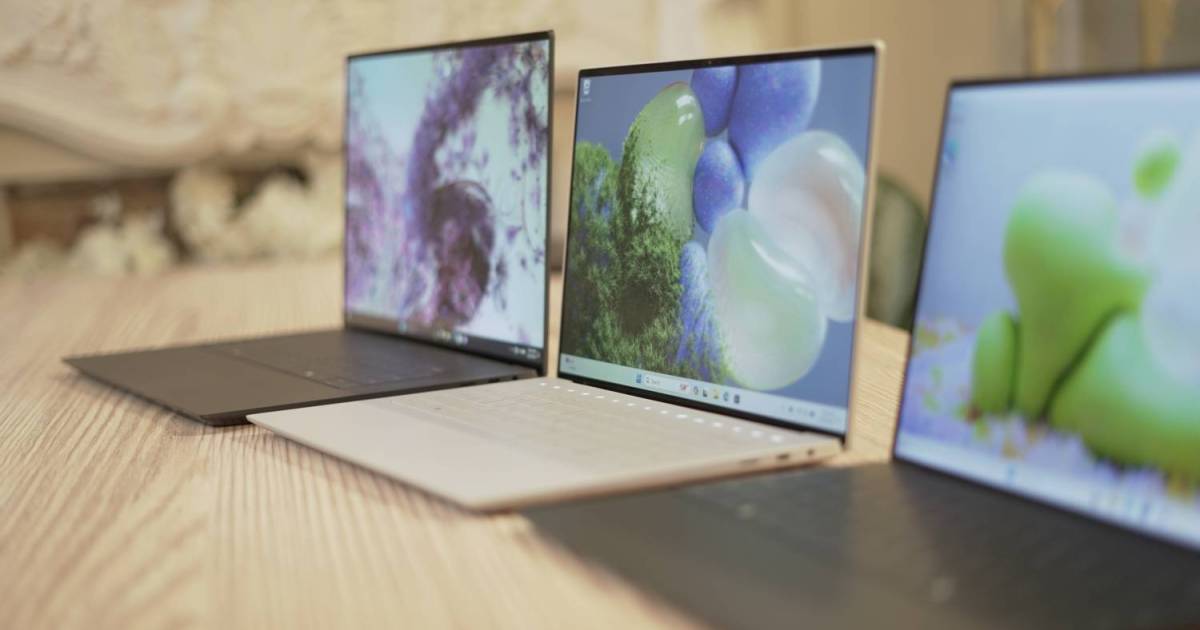Dell upended its XPS laptop lineup, downsizing the XPS 17 to a new 16-inch model and the XPS 15 to a new 14-inch machine. At the same time, it pulled design cues from the XPS 13 Plus (now just the XPS 13) to create ultramodern and sometimes controversial new machines.
The XPS 14 and XPS 16 offer smaller dimensions than their predecessors, with varying power levels inside. As always, choosing between the two depends entirely on how you plan to use your laptop. So, which of these two outwardly similar machines is right for you?
Specs and configurations
| Dell XPS 14 | Dell XPS 16 | |
| Dimensions | 12.6 inches x 8.5 inches x 0.71 inches | 14.1 inches by 9.4 inches by 0.74 inches |
| Weight | 3.8 pounds | 4.8 pounds |
| Processor | Intel Core Ultra 7 155H Intel Core Ultra 7 165H |
Intel Core Ultra 7 155H Intel Core Ultra 7 165H Intel Core Ultra 9 185H |
| Graphics | Intel Arc Nvidia GeForce RTX 4050 |
Intel Arc Graphics Nvidia GeForce RTX 4050 Nvidia GeForce RTX 4060 Nvidia GeForce RTX 4070 |
| RAM | 16GB 32GB 64GB |
16GB 32GB 64GB |
| Display | 14.5-inch FHD+ (1920 x 1200) IPS non-touch, 120Hz 14.5-inch 3.2K (3200 x 2000) OLED touch, 120Hz |
16.3-inch 16:10 FHD+ (1920 x 1200) IPS non-touch, 120Hz 16.3-inch 16:10 4K+ (3840 x 2400) OLED touch, 120Hz |
| Storage | 512GB PCIe Gen4 SSD 1TB PCIe Gen4 SSD 2TB PCIe Gen4 SSD 4TB PCIe Gen4 SSD |
512GB PCIe Gen4 SSD 1TB PCIe Gen4 SSD 2TB PCIe Gen4 SSD 4TB PCIe Gen4 SSD |
| Touch | Optional | Optional |
| Ports | 3 x USB-C with Thunderbolt 4 1 x 3.5mm audio jack 1 x microSD card reader |
3 x USB-C with Thunderbolt 4 1 x 3.5mm audio jack 1 x microSD card reader |
| Wireless | Wi-Fi 6E and Bluetooth 5.3 | Wi-Fi 7 and BlueTooth 5.4 |
| Webcam | 1080p with infrared camera for Windows Hello | 1080p with infrared camera for Windows 11 Hello |
| Operating system | Windows 11 | Windows 11 |
| Battery | 69.5 watt-hour | 99.5 watt-hour |
| Price | $1,699+ | $1,899+ |
| Rating | 3.5 out of 5 stars | Not reviewed |
Both laptops are premium, with the XPS 14 starting at a slightly lower price. You’ll spend $1,700 for an Intel Core Ultra 7 155H chipset, 16GB of RAM, a 512GB SSD, integrated Intel Arc graphics, and a 14.5-inch Full HD+ IPS display. You can mix and match components from there up to $3,699 for 64GB of RAM, a 4TB SSD, an Nvidia GeForce RTX 4050, and a 14.5-inch 3.2K OLED display.
The XPS 16 starts at $200 more for a Core Ultra 7 155H, 16GB of RAM, a 512GB SSD, Intel Arc graphics, and a 16.3-inch FHD+ IPS panel. Max it out, and you’ll spend a lot more at $4,399 for 64GB of RAM, a 4TB SSD, an Nvidia GeForce RTX 4070 GPU, and a 16.3-inch 4K+ OLED screen. Dell currently doesn’t offer the slightly faster Core Ultra 7 165H for either machine or the even faster Core Ultra 9 185H that will eventually come to the XPS 16, which will (presumably) further raise its price.
These two laptops are closely matched at the low end, but the XPS 16 is much more powerful the more you spend. If you’re going to spend $3,500 or more for a laptop, the larger machine will give you more bang for your buck.
Design
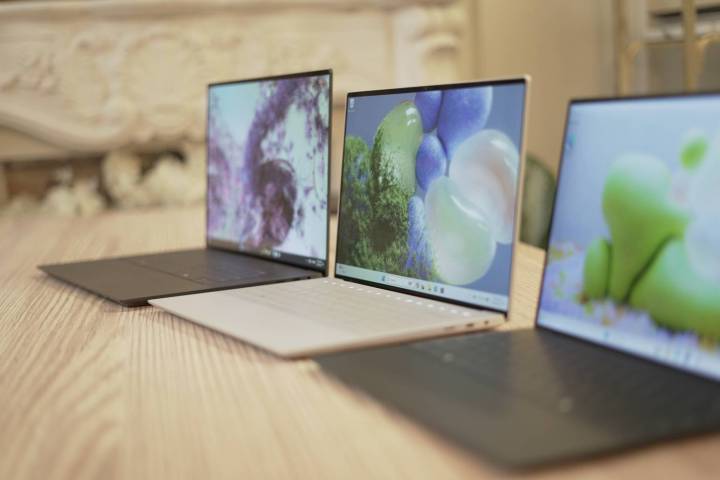
Open them up, though, and everything’s changed. Gone are the glass or carbon fiber palm rests and standard island keyboards. In their place, you’ll find glass palm rests with hidden haptic touchpads, zero-lattice keyboards, and LED buttons replacing physical function keys. Each of these changes has kicked off controversy among XPS aficionados and general laptop buyers alike. But there’s no doubt that the new look is ultramodern and drop-dead gorgeous from an aesthetic perspective.
Interestingly, when comparing the XPS 14 and the XPS 16, the keyboard stays the same size while the speaker grills to each size grow on the larger model, as does the palm rest. But from a distance, they’re identical.
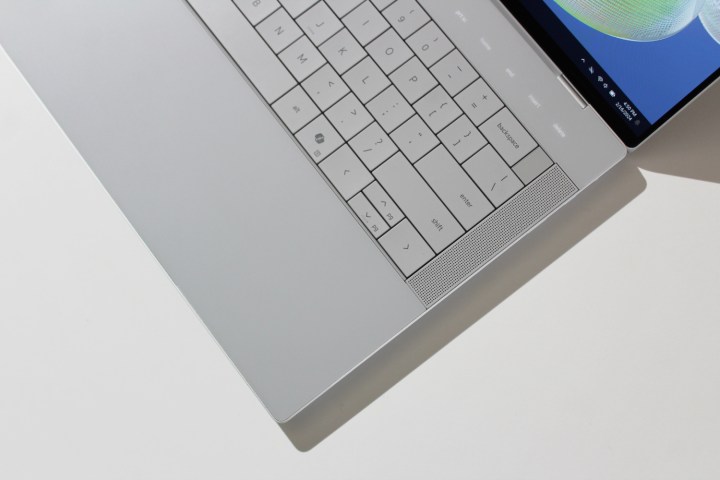
We’ve only reviewed the XPS 14, and its build quality was excellent as per the brand. We suspect that the XPS 16 will be the same. Thanks to the smallest display bezels on laptops to this day, both machines are surprisingly small, given their display sizes. Naturally, the 14-inch model is slightly thicker at 0.71 inches versus 0.77 inches, while it’s also a pound lighter. You can find thinner and lighter laptops in each size if you look around, but Dell is trying to provide a mix of good performance and small chassis.
The keyboard has large keycaps with zero key spacing, something you’ll need to get used to on both laptops. They’re the same size and will likely provide the same overall feel. We liked the keyboard a lot in our review, and whether you’ll miss a numeric keyboard on the 16-inch model is down to subjective needs. The keyboard’s most controversial aspect is the row of LED buttons along the top that are particularly odd on the larger machine where there’s plenty of room for physical keys. These buttons don’t have haptics, so you’ll have to look to make sure they’re responding.
The hidden haptic touchpad worked very well on the XPS 14 once you got used to being unable to tell where the touchpad starts and where it ends. It was large enough on the XPS 14 that you’re unlikely to find yourself swiping on the palm rest, and palm rejection was excellent. We expect the XPS 16 will offer the same performance, only better given the larger size.
Connectivity is one area where both laptops are equally disappointing. Larger laptops can equip more ports, but Dell decided to go all-in on Thunderbolt 4. Both have three, one of which powers the laptop, so both are equally limited when supporting legacy devices. The microSD card reader is also disappointing, especially on the XPS 16 that’s most likely to be desired by creators. Simply put, both laptops will require dongles. Unexpectedly, the XPS 16 supports Wi-Fi 7 and Bluetooth 5.4, while the XPS 14 lingers a generation behind.
Regarding their webcams, both offer 1080p versions with infrared cameras for Windows 11 Hello facial recognition, and both have fingerprint readers embedded in their power buttons.
Performance
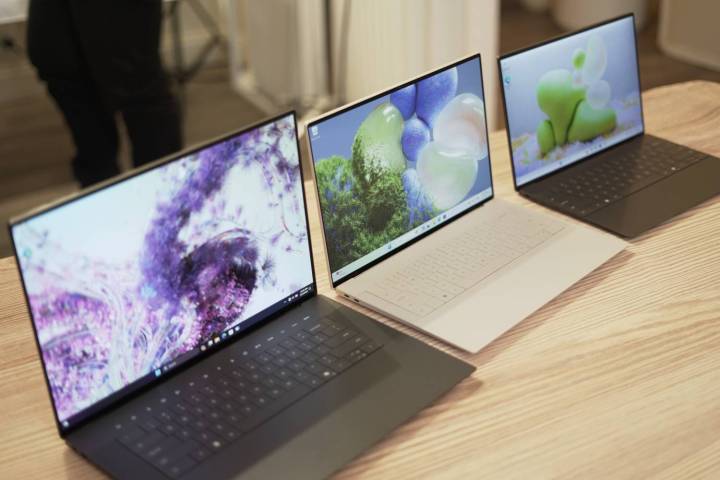
The XPS 14 and 16 are both built around Intel Core Ultra CPUs, members of the Meteor Lake chipset that adds in extra low-power CPU cores, a dedicated Neural Processing Unit (NPU) for on-chip AI support, and upgraded Intel Arc integrated graphics. On paper, both laptops offer a choice of the Core Ultra 7 155H (up to 4.8GHz) or 165H (up to 5.0GHz), both of which are 28-watt CPUs with 16 cores (six Performance, eight Efficient, and two Low Power Efficient) and 22 threads. The XPS 16 will eventually up that to the Core Ultra 9 185H, a 45-watt chip with the same number of cores and a slightly faster 5.1GHz Max Turbo frequency.
In addition, both machines can be configured with Intel Arc integrated graphics that fall somewhere between the older Intel Iris Xe graphics and the entry-level Nvidia GeForce RTX 4050 GPU. The XPS 14 can also be configured with the RTX 4050, while the XPS 16 offers up to the RTX 4070.
Thanks to the low-end GPU, we round the XPS 14 to provide excellent productivity performance in our review but with limited speeds for gamers and creators. The XPS 16 should provide significantly faster performance in creative apps like Adobe Premiere Pro that can use the faster RTX 4070. We’ll have to wait for our review of the larger machine to provide benchmark comparisons.
Display and audio
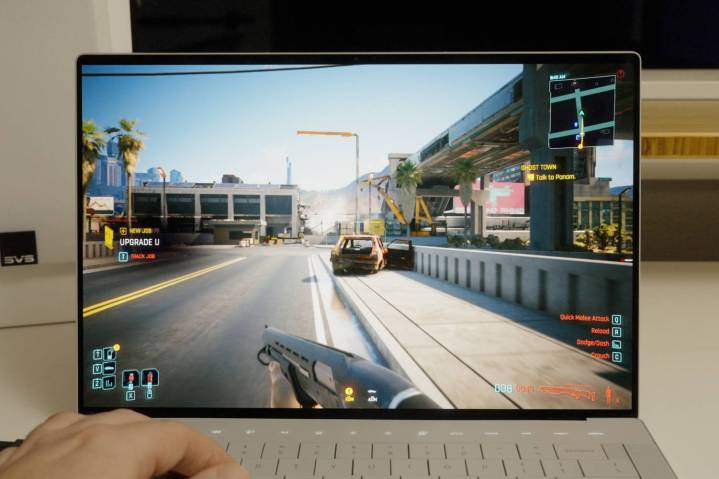
The XPS 14 and the XPS 16 offer a choice between lower-resolution and lower-power IPS displays and higher-resolution and more power-hungry OLED panels. The XPS 14 uses a 14.5-inch 16:10 screen size in either Full HD (1920 x 1200) IPS or 3.2K (3200 x 2000) OLED, while the XPS 16 uses 16.3-inch 16:10 panels in either Full HD+ IPS or 4K+ (3840 x 2400) OLED. All of these choices run at up to 120Hz for a buttery smooth Windows 11 and gaming experience.
We reviewed the XPS 14’s OLED option and found it provided fairly wide colors, with the AdobeRGB gamut falling a bit below the OLED norm at 85% (most are closer to 100%) but with excellent color accuracy at a Delta-E of just 0.5 (1.0 or less is indistinguishable to the human eye). The usual OLED inky blacks were on full display, while the 374 nits of brightness was good but not great. Again, we’ll have to await our review of the XPS 16 to compare its OLED display. Both IPS display options are likely to be good but not as great, while the XPS 14’s version will be sharper at the same resolution.
In terms of audio quality, the XPS 14’s quad-speaker configuration was okay, lacking bass while providing an overall lack of clarity. The XPS 16 will also offer a similar setup.
Portability
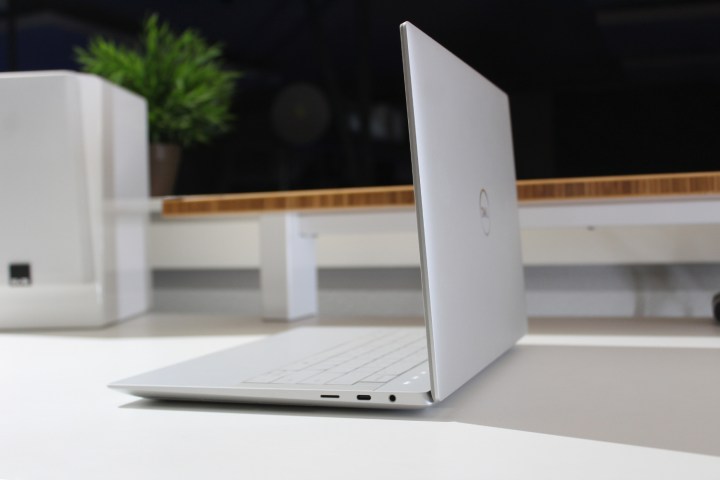
Neither laptop is particularly small or light, but the XPS 14 is considerably more portable than the XPS 16. The latter is large enough to be a burden to carry around, although more so than some other 16-inch laptops.
The XPS 14 provided an average battery life of around 8.5 hours of web browsing. Real-life use was about four or 5 hours of typical productivity tasks. The XPS 16 has a significantly larger battery at 99.5 watt-hours compared to the XPS 14’s 69.5 watt-hours, but it also has a larger and, in the case of the OLED display, higher-resolution display. We’re a broken record, but a battery life comparison will await our XPS 16 review.
Choose your size and performance carefully
The XPS 14 and XPS 16 are so similar in so many ways that it’s hard to say one is better than the other. We still have some testing to do, but we’re fairly certain that the XPS 16 will be a lot faster when fully configured, and its large, high-res 4K+ OLED display will be excellent.
But, not everyone needs the fastest performance and the XPS 14 offers significant portability advantages. It’s also $200 less expensive. So, which of these laptops is better depends entirely on whether you want a faster laptop or one that’s easier to carry around.
Editors’ Recommendations

Wanda Parisien is a computing expert who navigates the vast landscape of hardware and software. With a focus on computer technology, software development, and industry trends, Wanda delivers informative content, tutorials, and analyses to keep readers updated on the latest in the world of computing.

